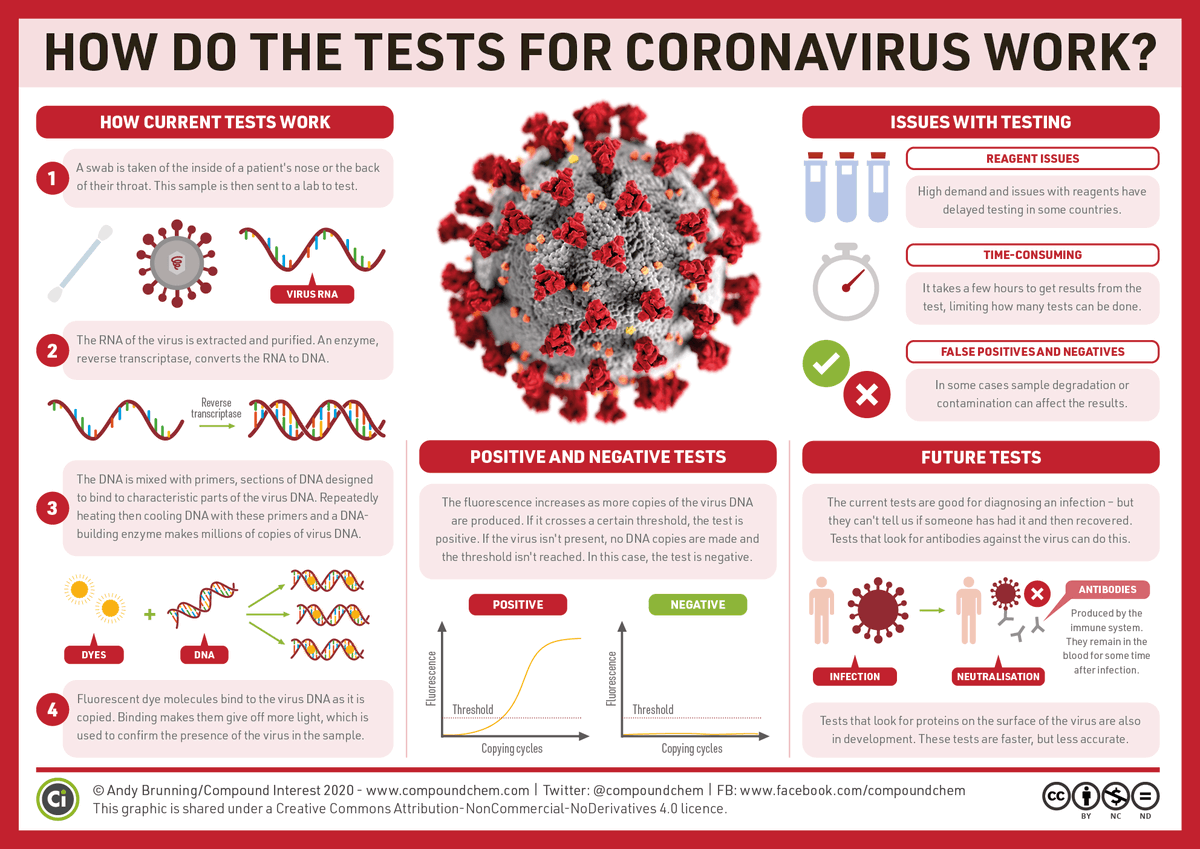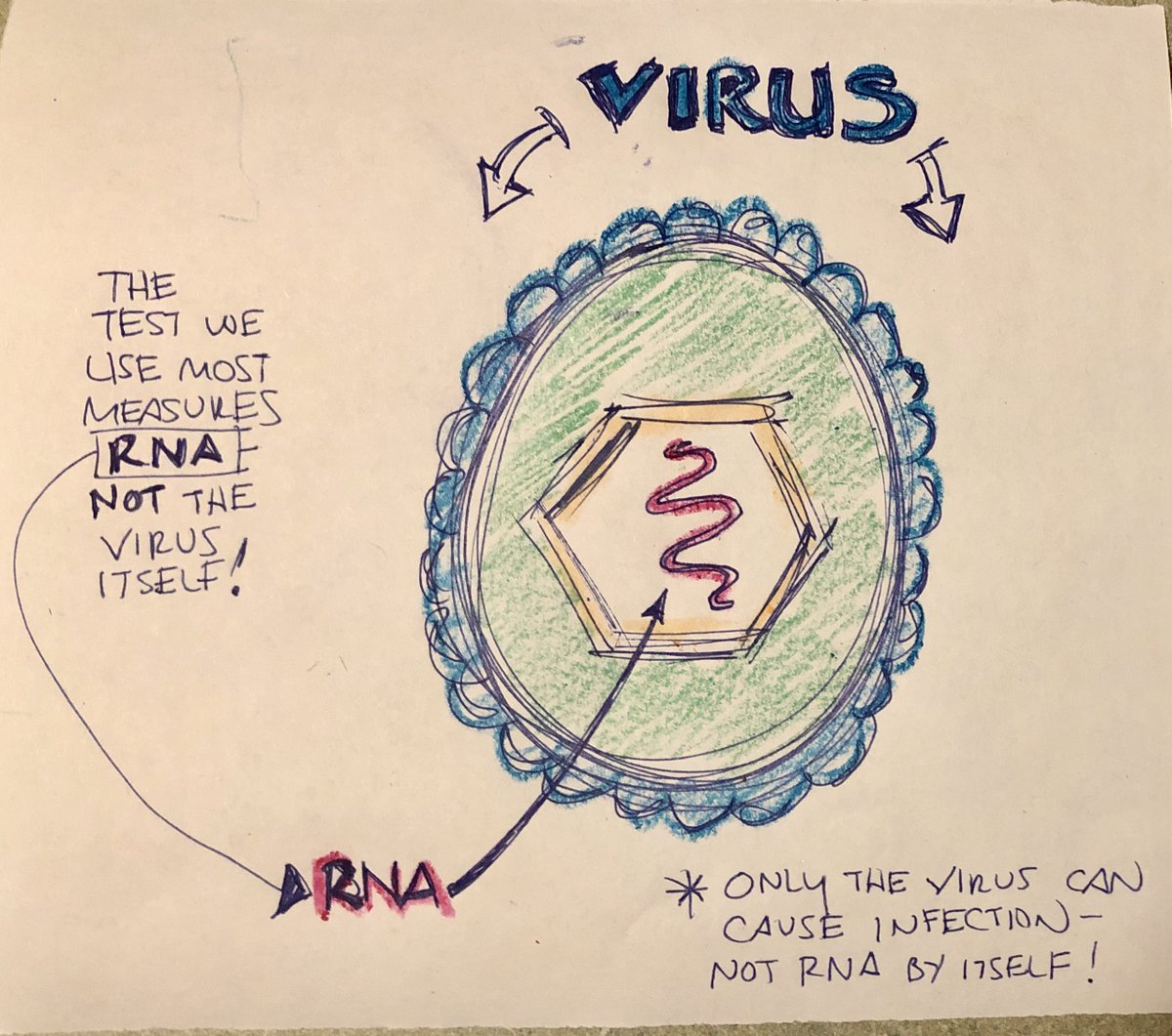Let’s talk about testing!
To start, there are 2 types of testing:
1. Viral tests: used to detect ACTIVE infection
2. Serology (antibody) tests - to detect PREVIOUS infection
Today we talk about VIRAL tests, & serology tomorrow.
Let's go!
We test to better understand:
Who is sick with COVID?
How the disease is spreading?
What % of those infected survive?
What % of cases are asymptomatic (capable of spreading the virus even with no symptoms)?
The @CDCgov has recommendations on who should be tested, but guidance is currently led by local & state health departments.
The reality is that even with expanded testing, not everyone who is experiencing symptoms of COVID19 will be able to access testing.
The best place to look for testing sites is your local or state health department website.
Or here: bit.ly/2zFwScQ
To detect ACTIVE infection with SARS-CoV-2 (the virus that causes COVID19), we primarily use a test called RT-PCR.
First we'll talk about RT-PCR, and then the important difference between what this test detects & what actually causes infection!
So what is RT-PCR? It's short for real-time, reverse transcriptase-polymerase chain reaction. It takes viral genetic material (RNA), turns it into DNA, and makes billions of copies of it until it reaches a set threshold for detection.
Great graphic from @compoundchem

A positive test means RNA was detected is in your system.
And RT-PCR has been positive on samples from people weeks after recovery.
But we suspect that these likely represent leftover fragments - not infectious virus itself!
Just like everything in life, viral tests for COVID19 aren’t perfect. They depend a lot on certain things like:
Good specimen collection with the swab?
Did the lab use the right reagents?
Plus all tests have their own inherent issues and limitations.
No test is 100%.
Even if you DO have COVID19, sometimes the test will be negative.
Or even if you DON’T have COVID19, sometimes you’ll still test positive! This is important!
Sample wasn’t collected well, problem with the test, low amount of virus present, etc…
So we'd tell people who have COVID that they don’t. Big problem!
The result is that some people who HAVE COVID are told they don’t. And some who don’t have COVID are told they do!
This'll be important when we talk about negative - positive - negative tests later.
There are various estimates of how many tests we need to be doing to tackle COVID - but everyone agrees that we need WAY more tests being done every day!
One Harvard study says at least 500k/day. bit.ly/3d9o65w
Others say MILLIONS per day!
In addition to just MAKING more tests, theres a lot more we need to DO more tests.
You need healthcare workers to do the tests, swabs, and personal protective equipment.
Many of these were in short supply, slowing the increase in testing.
There have been reports of people testing +, then testing -, then testing + again.
So does that mean you can have COVID, get better, and get sick right away again?
Probably not.
This may reflect limitations of the tests - remember false negatives!
Yup! There are molecular assays, protein tests, and point-of-care tests all under development right now.
There’s even a FDA approved home test.
And CT scans can help diagnose COVID, but it’s not as sensitive or practical as others.
Soon you’ll hear more about antigen tests.
Instead of looking for genetic material like RT-PCR, these tests look for proteins on the outside of the virus.
They can be done MUCH faster, but the results aren’t nearly as accurate.
For now, RT-PCR is king! 🧪👑
For our next episode, we’ll tackle serology (antibody) testing.
This thread (and future ones) + all supporting articles & research can be found at: bit.ly/3bRycHQ
And as a reminder, the goal is to share something like this every night for a week at ~9pm to address big questions around testing, treatments, vaccines, pathophysiology and more!
Powered by 🖍️ & 🥃.
Be safe!









